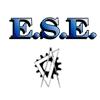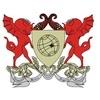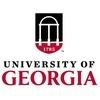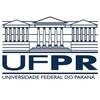Explore all the information on
Feed formulation
Welcome to the page about Feed formulation of Engormix; a source of knowledge on Feed formulation.
INTRODUCTION The global production of chicken eggs is constantly increasing, e.g., 37.4 million tons of chicken-eggs were produced in 1990, and 80 million tons in 2018. The WHO has estimated that production will have to increase four-fold to meet the global demand for chicken eggs in the next two decades (1, 2). Hence, the poultry industry must be increasingly efficient despite being one of the most efficient and technologically advanced animal production activities...
Comments : 0
Recommendations: 0
1. Introduction Available energy in feed or feed ingredients for poultry can be measured by different systems, with the apparent metabolizable energy (AME) [1], despite its limitations [2,3], being the commonly accepted and extensively used system. Three methods, namely, direct, substitution (or difference), and regression, have been used to determine the AME of ingredients for poultry. In each method, the excreta can be collected by total collection, which is the...
Comments : 0
Recommendations: 0
.jpg&w=3840&q=75)

Amino Acids from Rendered Products for Aquaculture
Suggested link
Dr. Piotr Stanislawski shares his advice with Engormix members regarding a profitable and effective choice of poultry feed additives....
Comments : 0
Recommendations: 2
Dr. Piotr Stanislawski shares his comments with Engormix members regarding the calculation of phosphorus and calcium, as well as other formulation issues....
Comments : 0
Recommendations: 7
Sandro Cerrate (Credinser, LLC) shares advice and tools to improve formulation and find a viable least-cost option in troubling times like these, as he explains in this Engormix video presentation....
Comments : 6
Recommendations: 6
A feeding study was conducted to examine the efficacy of a synergistic blend of feed additives on growth performance, livability, gut integrity, immunity, caecal microflora and footpad health in broilers challenged with subclinical necrotic enteritis (NE). Additives were: A) synergistic blend of medium chain fatty acids (MCFA), slow-release C12, target release butyrates, organic acids (OA) and a phenolic compound; B) synergistic blend of partly buffered OA with MCFA; C) synergistic blend of...
Comments : 0
Recommendations: 1
.jpg&w=3840&q=75)

Amino Acids from Rendered Products for Aquaculture
Suggested link
Dynamic return to in-person event featuring top research, networking and more
Ottawa, ONTARIO — Canada’s animal nutrition community is poised to come together with renewed energy and excitement with the return of its in-person signature national conference.
New developments in animal nutrition which support a sustainable feed and livestock sector will be featured at the 6th annual Animal Nutrition Conference of Canada (ANCC)....
Comments : 1
Recommendations: 0
INTRODUCTION Phosphorus is an essential mineral for the formation and maintenance of bone structure, playing additionally a number of functions in the body. According to UNDERWOOD & SUTTLE (1999), phosphorus is found in a high concentration in bone tissue where together with calcium they form hydroxyapatite, which is the major constituent of the skeleton. Phosphorus portion not related to the structural function in the body is contained in high-value organic molecules,...
Comments : 0
Recommendations: 0
INTRODUCTION The poultry gastrointestinal tract (GIT) is home to a complex, dynamic, and variable bacterial-dominated microbiota (Zhu et al., 2002). This GIT microbiome variation may be explained by different host characteristics and environmental factors (Kers et al., 2018), including birds age (Ballou et al., 2016; Pedroso et al., 2016), sex (Torok et al., 2013; Zhao et al., 2013), type and breed (Videnska et al., 2014; Kim et al., 2015), and GIT regions (Yeoman et al., 2012)....
Comments : 1
Recommendations: 0
Corn-soya based mash diet has problem in flowing in the feeder and it gets stuck in the bridge. Some of the literature say that sodium bentonite can be mixed at the rate of 2kg/ton to overcome this problem. I need practical suggestion regarding use of sodium bentonite in poultry mash feed. And is there any other more effective solution to this problem other than using clay? ...
Comments : 15
Recommendations: 0
.jpg&w=3840&q=75)

Amino Acids from Rendered Products for Aquaculture
Suggested link
1. Introduction Livestock plays an important role in the Indian economy. Livestock sector recorded growth in value of output about 4.8 % per annum. The eleventh five year plan expected higher growth in twelfth five year plan. The increased demand for protein foods in the country is the main driver for growth, which also includes small stakeholders and landless farmers, account for major share in ownership of livestock which has recorded 5%growth per annum previously, can grow...
Comments : 4
Recommendations: 3
What indicators are there that the feed is processed and manufactured well? Why the Mixer Matters in Animal Protein Production? Hear what Dr. Johnny Wilson has to say about these topics...
Comments : 0
Recommendations: 4
INTRODUCTION An important function of animal production is to provide high-quality protein for human consumption. In order to fulfill this role, animals themselves require high-quality protein in correct proportions in their diets. There are many ways to assess the quality of proteins, but nevertheless, they are all related to amino acid supply, which thus becomes a key feature in animal nutrition. For many years,...
Comments : 3
Recommendations: 10
Two experiments were conducted to test the hypothesis that different combinations of conditioning and expansion of soybean expellers increases nutritional value. Non-heat-treated soybean expellers (L-1) and soybean expellers conditioned for 60 s at...
Comments : 1
Recommendations: 2
.jpg&w=3840&q=75)

Amino Acids from Rendered Products for Aquaculture
Suggested link
Soybean meal (SBM) is an ingredient with a high digestibility of protein, Lys, and Met. An optimal heating process of SBM is required to eliminate antinutritional components that negatively interfere with digestion, absorption, and metabolism of nutrients. The effect of 3 commercial SBM batches were subjected to different heat treatments to evaluate its effect on growth performance and intestinal integrity. A total of 1,860 male Cobb 500 broiler chicks were vaccinated at 1d of age with a...
Comments : 0
Recommendations: 1
INTRODUCTION Poultry production is one of the largest sources of animal protein supply for human consumption in the world. For many countries, like Australia, chicken-meat is the dominant animal protein, therefore production must continue to expand to supply increasing demand. In Australia, for instance, per capita consumption of chicken-meat is predicted to increase by 7.9% over the next 5 years [1]. Furthermore, feed represents 65% of total chicken-meat production cost [2],...
Comments : 1
Recommendations: 2
INTRODUCTION It is important to estimate precisely the energy value of feedstuffs and diets, either for least-cost formulation or for adapting feed supply to the metabolizable energy requirements of broilers. Unfortunately, such energy is not used with 100% of efficiency for production, because during metabolism, around 15% of the energy is wasted as heat, and this is commonly referred to as heat increment or specific dynamic action. In fact, net energy values vary with bird...
Comments : 2
Recommendations: 1
Introduction Soybean [Glycine max (L.) Merr.] meal (SBM) is typically the main protein feedstuff included in livestock diets (Félix et al., 2010; Oliveira et al., 2020). After being subjected to an adequate heat treatment, SBM has a high crude protein content, as well as a high digestible energy and low fiber contents (Félix et al., 2010). In general, SBM makes up 30% of broiler diets (Duarte & Junqueira, 2013). However, broiler performance is strongly...
Comments : 0
Recommendations: 0
.jpg&w=3840&q=75)

Amino Acids from Rendered Products for Aquaculture
Suggested link
1. Introduction In Nigeria today, despite the significant investment in commercial agriculture by the government, aid agencies, multilateral organizations and individuals, livestock production has not succeeded in meeting the protein demands in the country (Oluwatayo and Adedeji, 2019) [1]. The increasing human population in the country has indicated that the conventional forms of livestock production and artisanal fisheries which have been over-exploited will not be sufficient...
Comments : 5
Recommendations: 4
Feed contributes about 70% of total expenses required for the modern poultry enterprises in general. As the days go by, the issue is becoming a cause of concern and it becomes almost mandatory to rethink on the feeding strategies to make the enterprises profitable & sustainable as well. Since the major reason for the concern is the rise in prices of various feedstuffs thus as a consequence practice to utilize comparatively cheaper and unconventional feed ingredients becomes time...
Comments : 4
Recommendations: 3

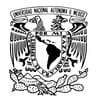



.jpg&w=3840&q=75)
